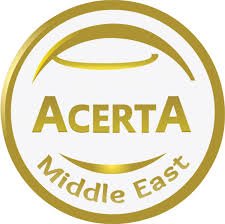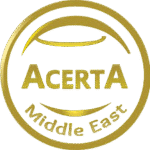
In industries like oil and gas, petrochemicals, and manufacturing, where the potential for fires, explosions, or toxic releases exists, managing risks is a fundamental responsibility. The principle of reducing risks to As Low As Reasonably Practicable (ALARP) is a cornerstone of safety management, ensuring that hazards are controlled without imposing disproportionate costs or impractical measures. ALARP Demonstration is the process of proving that risks have been adequately reduced to meet this standard, balancing safety with operational and economic realities. This article explores the principles, methodology, and practical applications of ALARP Demonstration, with insights into how Cormat Group applies this approach to achieve safety excellence in high-hazard environments.
ALARP Demonstration is the systematic process of showing that risks associated with a facility, process, or activity have been reduced to a level that is As Low As Reasonably Practicable. The ALARP principle, widely adopted in safety regulations like the UK’s Control of Major Accident Hazards (COMAH) and offshore safety standards, requires that risks be minimized to the point where further reductions would be grossly disproportionate to the benefits achieved. This involves identifying hazards, assessing risks, implementing controls, and documenting the rationale for accepting residual risks.
In practice, ALARP Demonstration is a key component of safety management in high-hazard industries. For example, in a refinery, an ALARP Demonstration might show that adding fire-resistant coatings to structural steel reduces fire risks sufficiently, while installing additional sprinklers would be cost-prohibitive with minimal added benefit. The goal is to achieve a balance where safety is prioritized, but resources are used efficiently, ensuring compliance with regulations and protecting workers, assets, and the environment.
ALARP Demonstration is critical for several reasons, making it an essential tool in high-hazard industries:
A 2023 report by the Health and Safety Executive (HSE) found that facilities with robust ALARP Demonstration processes reduced major accident rates by 40%, highlighting its importance in achieving safety goals.
ALARP Demonstration is built on several core elements that ensure a comprehensive approach to risk management:
Identify potential hazards, such as flammable gases, toxic chemicals, or high-pressure systems, that could lead to major accident hazards (MAHs).
Evaluate the likelihood and consequences of hazards, using qualitative or quantitative methods to determine risk levels.
Implement preventive controls (e.g., safety interlocks) and mitigative controls (e.g., fire suppression) to reduce risks.
Assess the cost and feasibility of additional controls against the risk reduction they provide, determining where further measures are disproportionate.
Document the rationale for accepting residual risks, showing that they are ALARP and tolerable based on industry standards or regulatory thresholds.
Create detailed ALARP reports, including hazard lists, risk assessments, control measures, and cost-benefit analyses, to support audits and compliance.
Involve employees, safety teams, and regulators in the process to ensure transparency and alignment with safety objectives.
ALARP Demonstration is applied across high-hazard industries:
ALARP Demonstration is a vital process for managing risks in high-hazard industries, ensuring safety, compliance, and efficiency. By identifying hazards, implementing controls, and justifying residual risks, it achieves a practical balance between safety and cost. Cormat Group exemplifies how a rigorous ALARP Demonstration drives safety excellence, protecting lives, assets, and the environment. Despite challenges like subjectivity and data limitations, technology, stakeholder collaboration, and regular updates can address them. As industries evolve, ALARP Demonstration will remain essential for navigating the complexities of risk management in high-stakes environments.
Please get in touch with our specialist.
Sultan International Tower
P.O. Box 41233,
Abu Dhabi, U.A.E.
Landline: +971 2 622 3535 Ext: 303
Cormat-Al Bunyan Vision Contracting
131 street, Al Muruj, Abha, KSA

Building 2,
Guildford Business
Park Road, Guildford.
Surrey. UK. GU2 8XG.
Sultan International Tower
P.O. Box 41233,
Abu Dhabi, U.A.E.
Landline: +971 2 622 3535 Ext: 303
Cormat-Al Bunyan Vision Contracting
131 street, Al Muruj, Abha, KSA

Copyright 2025 Cormat Group | All Rights Reserved | Certified